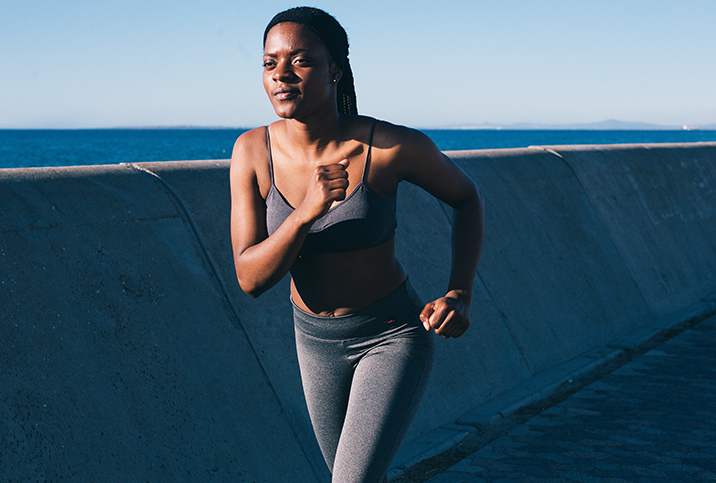Diet and Exercise Tips to Treat Menstrual Symptoms

We all know the symptoms we experience leading up to and during our periods. Bloating and heaviness are annoying, but the severe symptoms of fatigue and abdominal cramps can leave many of us sidelined. Instead of spending your period on the couch, these tips can help to prevent and treat menstrual symptoms.
Dietary choices for PMS
The symptoms of premenstrual syndrome (PMS) can start two weeks before menstruation and will often transition into period symptoms. This means some women only experience one symptom-free week each month. When you consider that women typically experience monthly menstruation for 40 years, for these women, a majority of their life is spent in pain, being bloated or generally uncomfortable.
Thankfully, there are dietary choices that you can implement during PMS to prevent some of the more impactful symptoms. In addition to a diet high in fresh fruits and vegetables, reducing animal fat, sodium and caffeine can help to prevent water retention and reduce painful cramps. If you've tried these changes and still experience PMS, taking vitamins B1 and B6 can help to reduce bloating and mood swings.
Relief during your period
During your period, your body can experience radical hormonal fluctuations that can make your body desire essential minerals. This often causes cravings, and we may find ourselves reaching for something sweet, salty or fatty. Instead of grabbing a pint of ice cream on your next grocery run, consider the essential nutrients in the items you crave. Increasing these minerals can help to eliminate cravings.
For example, women who have heavy bleeding can experience temporary anemia, which can increase the fatigue and forgetfulness associated with your period. During your period, you might crave savory meals, but this is your body trying to find necessary iron and protein. To compensate for these changes, drink plenty of water and increase your iron and protein intake.
Other supplements, such as zinc, vitamin D, magnesium, vitamin E and omega 3 and 6, can help to relieve menstrual cramps, mood fluctuation, water retention and depression. This might seem like a lot of pills to swallow, but most of these supplements can be found in a daily multivitamin. Even if you're not so keen on taking a daily supplement, use it when you begin feeling symptoms of PMS and continue throughout your period. You may be surprised by how much it helps.
Stay active and healthy
It can be difficult to maintain our usual activity level while we experience menstrual symptoms. For some people, myself included, cramps and bleeding can leave us feeling lethargic. In the past, I would skip my daily workout during my worst days, but I may have been doing more harm than good, as working out actually relieves menstrual cramps.
Instead of skipping your workout, consider altering your routine. If you know you're a heavy bleeder and your cramps are intense, maybe you want to skip abs this week. If you're worried about leakage and using a tampon or menstrual cup isn't possible, you can still get your steps in with a brisk walk instead of running or jogging.
While adapting your workout might seem as if you're cheating on your daily fitness regimen, taking care of your body is important. After all, isn't that why you work out?
Finally, low-impact exercises like yoga can help to stretch your abdominal muscles to relieve stiffness and cramps. Poses such as cat-cow, fish and cobra are especially effective because they target all the major abdominal and back muscles that are most affected by period cramps.
Don't let your period control you
Your monthly cycle shouldn't control your life, but finding relief can be difficult when we've been taught to just deal with it. Taking anti-inflammatory drugs can ease some of our discomfort, but periods are more than cramps. Instead of trying the same thing every month, consider making some changes that can help to improve your health and prevent the worst menstrual side effects.

















